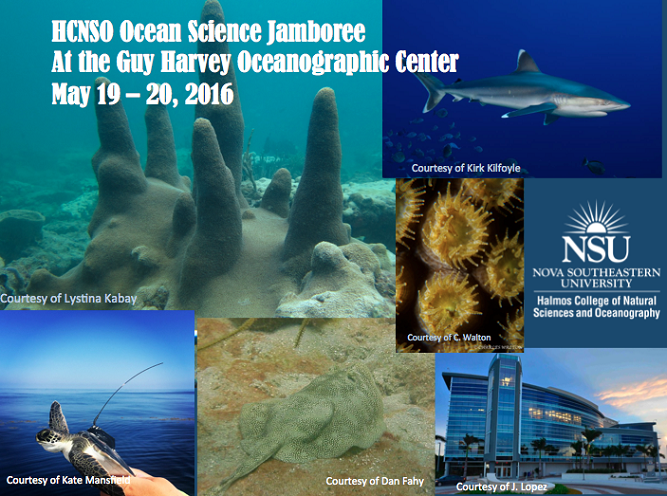Port Mariel, Cuba: Promise, Prosperity, & Pests
Location
Guy Harvey Oceanographic Center Facility
Start
5-20-2016 11:45 AM
End
5-20-2016 12:00 PM
Abstract
Commercial cargo vessels are a primary, unintentional vector of marine exotic species. The transit of these vessels through modified waterways between ocean basins (i.e., such as through the Panama Canal) increases the speed, volume, and frequency of transoceanic cargo movements as well as the survivability and introduction potential of non-indigenous organisms. Port Mariel, Cuba is predicted to be the next major cargo hub of the Caribbean. Cuba, therefore, will be susceptible to increased exposure to non-native marine species. In this study, a risk assessment is being conducted to determine the potential ecological and economic disturbances associated with the expansion of Port Mariel and the port’s subsequent biological vulnerability to invasive marine species. The study will be comprised of two components: 1) the probability of exotic species establishment, and 2) the possible consequences associated with future harmful, non-native populations. Emphasis on the first component is the focus of this presentation. Examining records of previous successful introductions within the wider Caribbean region, 30 marine exotic species were determined to be linked to vessel transfers. Eight of the investigated species have documented negative effects in the Caribbean and are classified as invasive in the literature. The evaluation of threat posed by the invasive species was dependent on global and regional distribution, environmental influence, monetary value of associated damages, and success of control initiatives. The impacts of the invasives range in severity from habitat degradation and native species displacement (i.e., low impact) to infrastructure damage and risk to human health (i.e., high impact). Further investigation will include Caribbean trade routes and international partners, environmental conditions surrounding Port Mariel, and responsibilities of the Cuban government. In order to protect valuable economic and ecological resources of Cuba, it is necessary to understand the vulnerability and preparedness of the country to future potential marine exotic introductions. This study, therefore, is useful to help identify the invasive threat of marine exotic species transported by cargo vessels to Cuba and can be utilized to improve and prioritize marine preventative and management efforts in Cuba and the greater Caribbean region.
Presenter(s) Biography
Charleen O'Brien can be contacted for more information at co393@nova.edu.
Port Mariel, Cuba: Promise, Prosperity, & Pests
Guy Harvey Oceanographic Center Facility
Commercial cargo vessels are a primary, unintentional vector of marine exotic species. The transit of these vessels through modified waterways between ocean basins (i.e., such as through the Panama Canal) increases the speed, volume, and frequency of transoceanic cargo movements as well as the survivability and introduction potential of non-indigenous organisms. Port Mariel, Cuba is predicted to be the next major cargo hub of the Caribbean. Cuba, therefore, will be susceptible to increased exposure to non-native marine species. In this study, a risk assessment is being conducted to determine the potential ecological and economic disturbances associated with the expansion of Port Mariel and the port’s subsequent biological vulnerability to invasive marine species. The study will be comprised of two components: 1) the probability of exotic species establishment, and 2) the possible consequences associated with future harmful, non-native populations. Emphasis on the first component is the focus of this presentation. Examining records of previous successful introductions within the wider Caribbean region, 30 marine exotic species were determined to be linked to vessel transfers. Eight of the investigated species have documented negative effects in the Caribbean and are classified as invasive in the literature. The evaluation of threat posed by the invasive species was dependent on global and regional distribution, environmental influence, monetary value of associated damages, and success of control initiatives. The impacts of the invasives range in severity from habitat degradation and native species displacement (i.e., low impact) to infrastructure damage and risk to human health (i.e., high impact). Further investigation will include Caribbean trade routes and international partners, environmental conditions surrounding Port Mariel, and responsibilities of the Cuban government. In order to protect valuable economic and ecological resources of Cuba, it is necessary to understand the vulnerability and preparedness of the country to future potential marine exotic introductions. This study, therefore, is useful to help identify the invasive threat of marine exotic species transported by cargo vessels to Cuba and can be utilized to improve and prioritize marine preventative and management efforts in Cuba and the greater Caribbean region.


